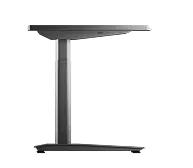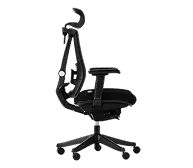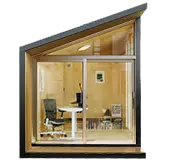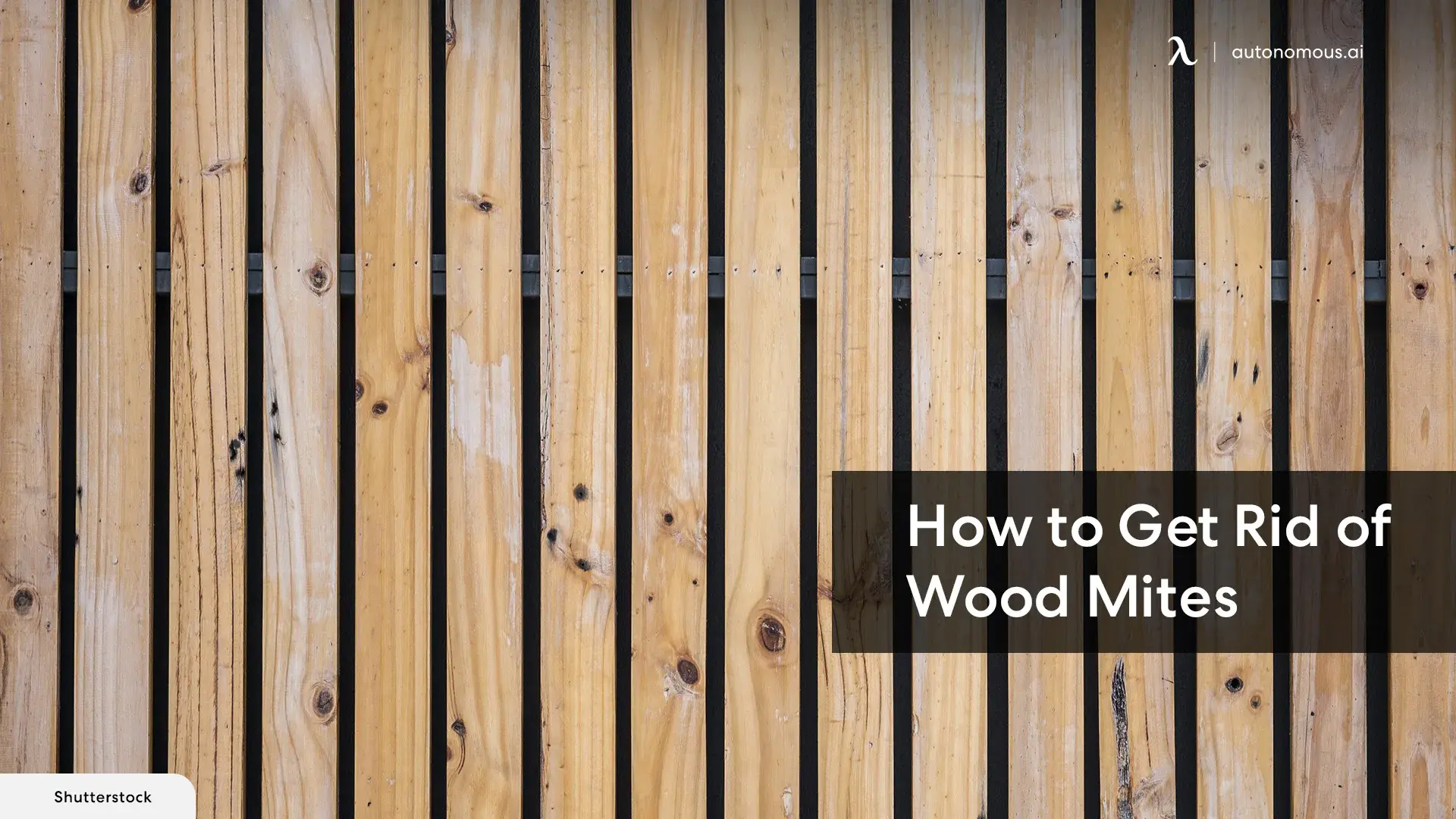
How To Get Rid Of Wood Mites For Your House?
Table of Contents
If you’ve noticed tiny bugs on wood or mysterious holes in your furniture, you may be dealing with wood mites. These microscopic pests might not bite or sting, but they can still create plenty of problems, especially if you love wooden décor, outdoor decks, or antique furniture.
In this guide, we’ll walk you through how to get rid of wood mites, identify the different types (from brown wood mites to red wood mites), and understand how they compare to other pests like termites.
What Are Wood Mites?
Wood mites are microscopic arthropods, typically measuring less than 1mm in size. While they don't bite humans or cause direct harm, their presence can still become a nuisance, especially in damp environments where wooden structures are common. This includes outdoor spaces like wood she sheds, which can be vulnerable to mites if not properly ventilated or maintained.
These mites feed on decaying wood, mold, or fungi, and although they don’t eat the wood itself like termites do, their activity can attract worse infestations if ignored. You’ll often find wood mites on decks, firewood, crawl spaces, or old wooden furniture.
Using durable, well-finished materials, like those recommended when choosing the best wood for a desktop, can help reduce the chances of mite-related issues indoors.
They come in different colors depending on the species:
- White wood mites often appear in humid, moldy environments.
- Brown wood mites are commonly found in aged wood.
- Black wood mites may be confused with other pests, but are usually harmless.
- Gray wood mites typically blend into the surface, making them hard to spot.
- Red wood mites (often mistaken for spider mites) may be seen crawling on wood or concrete surfaces outdoors.
Wood mites are frequently encountered in places with significant humidity, such as basements and crawl spaces.
Firewood, wooden beams, and other wooden constructions can all get infested with wood mites. To avoid a wood mite infestation, it is crucial to remain watchful and monitor these areas frequently.
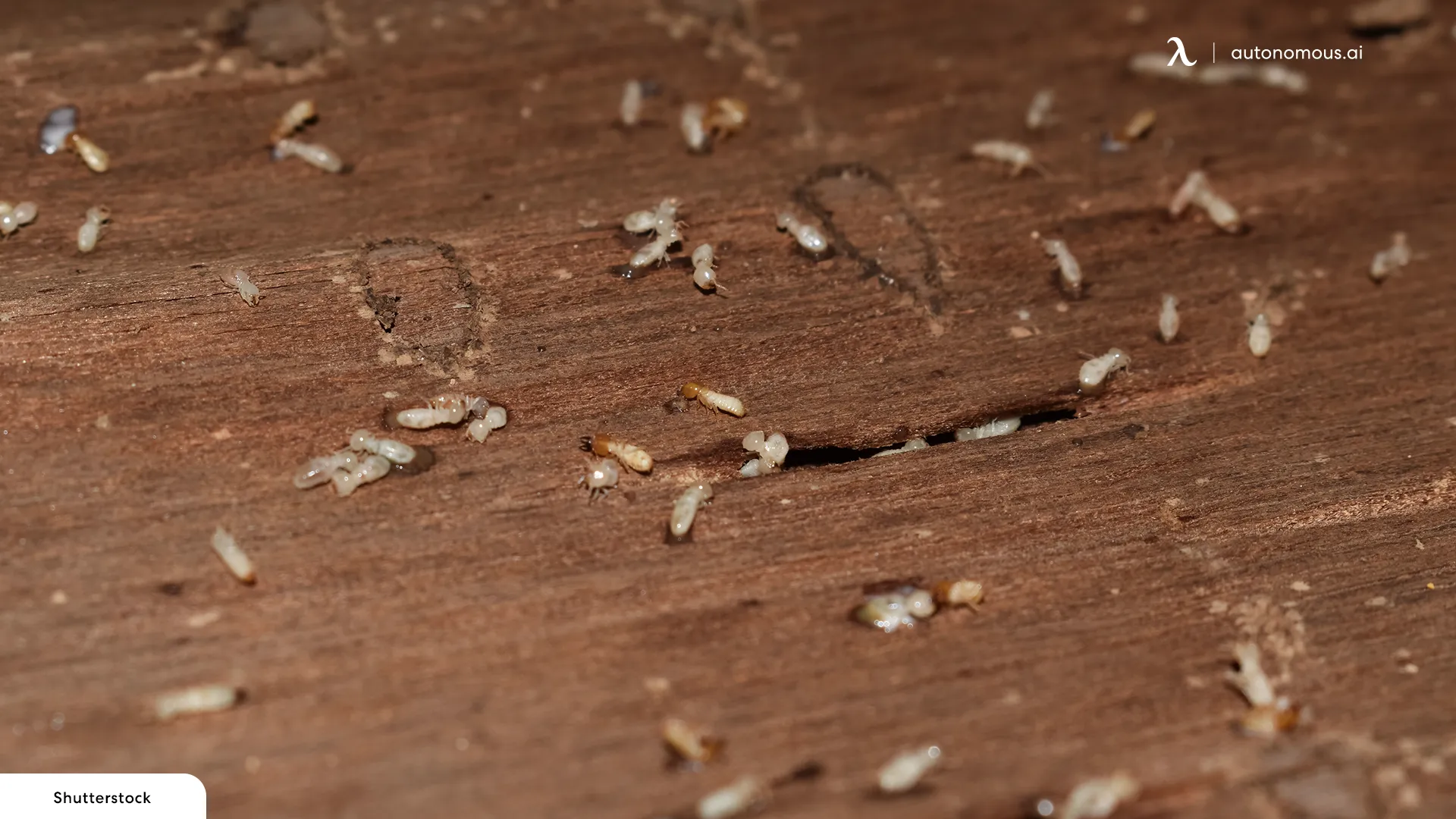
Common Types Of Wood Mites
Not all wood mites are the same—some feed on organic decay, others hitchhike on insects, and a few even help reduce pest populations. Understanding which type you’re dealing with can help you apply the right treatment method and avoid confusion with other household pests.
Below is a breakdown of mite species that are either commonly found on or near wood or are often mistaken for wood mites.
Type of Wood Mite | Characteristics | Where They Live | Common Control Methods |
Spider Mites | Tiny, red or black; may spin fine webs | Plants near wood, outdoor decks, and furniture | Use insecticidal soap, and remove infested vegetation |
Dust Mites | Microscopic, pale; known allergen | Upholstered wood furniture, dusty corners | Clean regularly, use dehumidifiers, and reduce fabrics |
Woodworm Mites | Small, white; feed on beetle larvae | Wood infested by wood-boring beetles | Treat with wood insecticides, reduce humidity |
Carpet Beetle Mites | Tiny, pale; follow beetle infestations | Carpets, wood trim, storage areas | Vacuum, clean storage, and treat with targeted sprays |
Oribatid Mites | Small, dark, round, slow-moving | Decaying wood, leaf litter, and garden areas | Keep wood dry, clear organic debris |
Predatory Mites | Minute, active; feeds on other mites | Gardens, compost piles, mite-infested wood | Introduce beneficially for pest control |
Cheyletid Mites | Transparent or pale; fast-moving | Animal bedding, wooden floors, and pet areas | Clean bedding, treat with insecticides |
Bark Beetle Mites | Very small, ride-on beetles under the bark | Firewood, logs, bark of trees | Remove infested wood, manage beetle outbreaks |
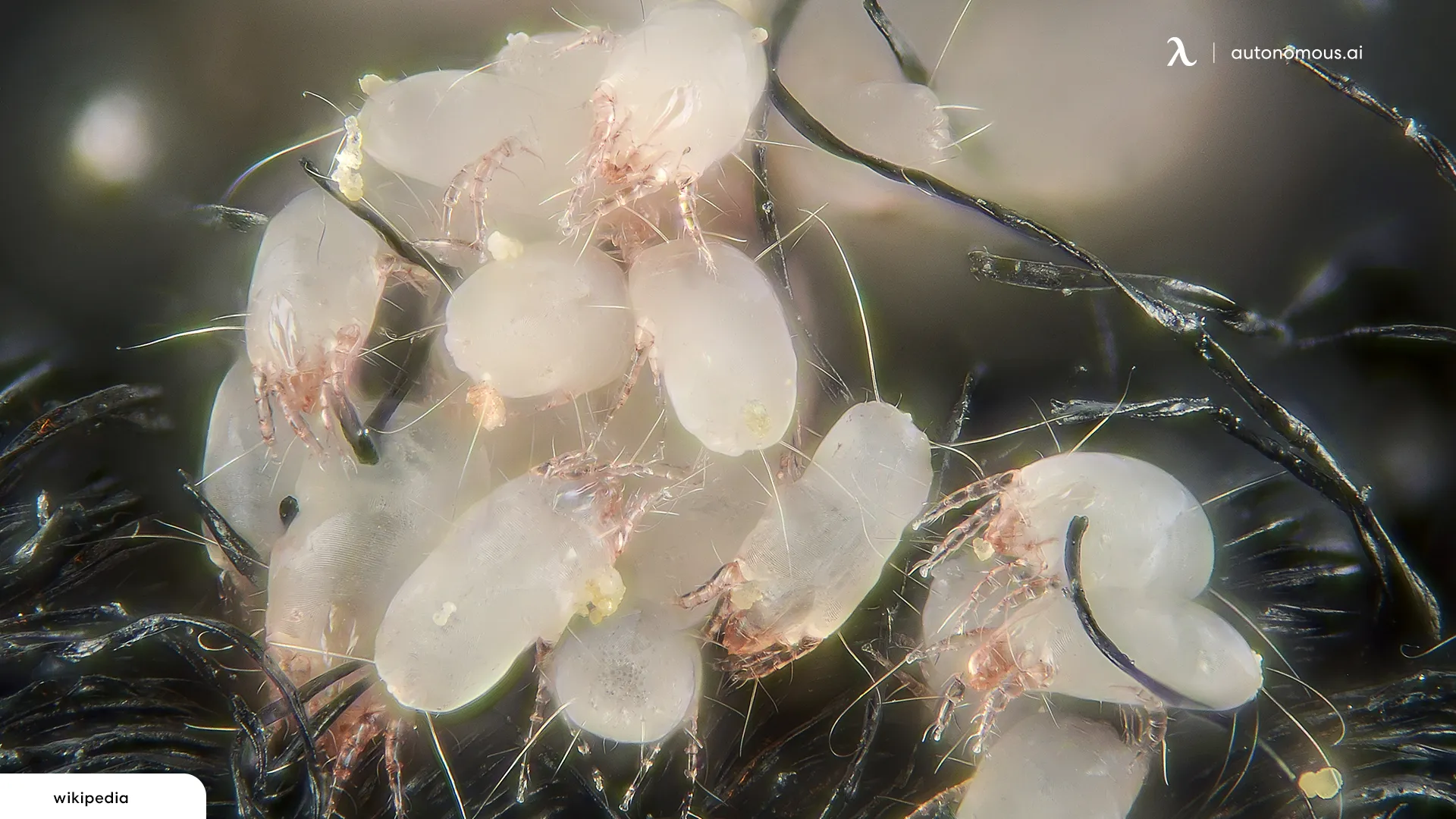
While many of these mites don't cause direct damage to wood, their presence can still indicate underlying issues, like mold, moisture, or even secondary pest infestations.
For example, woodworm mites often follow beetle larvae that bore through wood, while bark beetle mites are usually found in decaying logs or firewood.
In some cases, what appears to be a mite problem may actually stem from fungal growth—understanding the difference between black mold vs mildew on wood can help identify and address the root cause more effectively.
Signs Of Wood Mites
Identifying a wood mite infestation early is key to preventing further issues. While these pests are tiny, they leave behind several clues if you know what to look for.
Here are the most common and telling signs:
1. Clusters Of Tiny Moving Specks On Wood
Wood mites are often visible when gathered in clusters. These mites may appear as moving white, red, brown, or gray dots—barely larger than a grain of salt. You might notice them crawling on wood surfaces, around baseboards, or even near potted plants and firewood stored indoors.
- Red wood mites are especially noticeable on light-colored decks and walls.
- White wood mites may blend in with dust, making them harder to spot unless you're looking closely.
If you’re seeing tiny bugs on wood that seem to move slowly in groups, you’re likely dealing with wood mites.
2. Fine Webbing On Wood Or Nearby Surfaces
Some species, particularly red wood mites and spider mites, leave behind very fine, thread-like webs. These webs are often mistaken for dust or cobwebs, but they usually appear in unusual places, like the legs of a wooden chair or across the grain of a deck board.
These webs are a clear sign of active mite presence and reproduction.
3. Pinprick Holes Or Surface Damage
Although wood mites don’t eat wood the way termites do, their presence can still lead to surface damage. You may notice:
- Tiny pinholes that look like they were poked by a needle
- Slight surface etching, especially in unfinished or untreated wood
- Subtle grooves caused by movement across softwood fibers
These aren’t deep tunnels like with woodworms or termites, but they’re still signs of mite activity, especially when clustered in high-moisture areas.
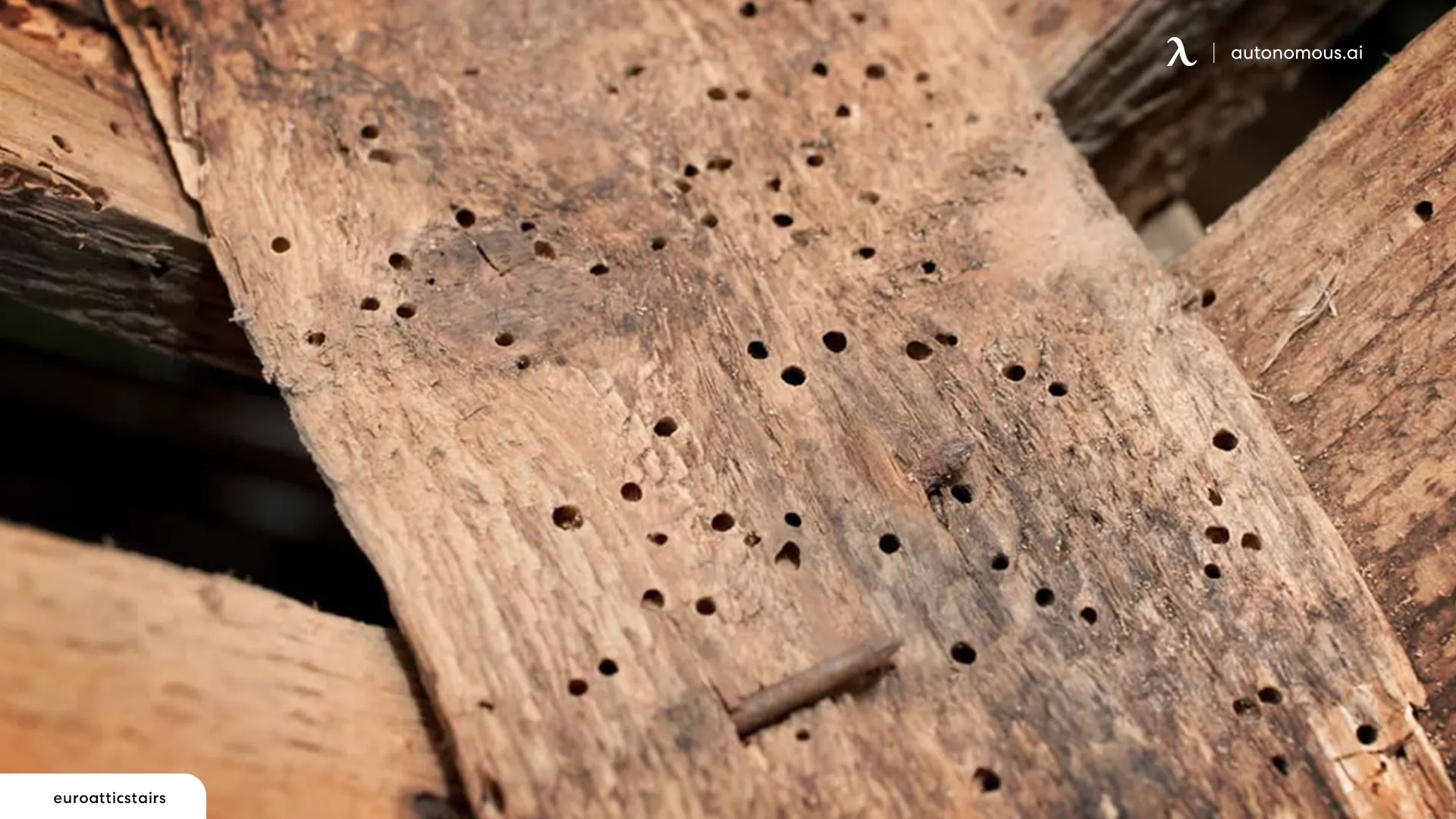
4. Increased Moisture Or Mold Growth
Wood mites are drawn to damp environments, particularly where mold and fungal growth are present. If you’ve noticed moisture collecting under furniture, condensation around windows, or mold patches near wood, there's a good chance wood mites are nearby.
If you’re dealing with mold in wood furniture, it’s worth checking for mite activity too—both issues often appear together in high-humidity spaces.
Wood mites don’t just survive in moist conditions—they thrive in them. High humidity levels support their reproduction and increase the risk of infestation.
5. Musty Or Earthy Odor
In rooms with heavy infestations, you might detect a musty, earthy smell. This odor often comes from mold or decaying organic matter that wood mites feed on. While the mites themselves don't produce a smell, their environment often does, serving as a secondary sign of infestation.
5. Presence On Outdoor Decks And Firewood
If you store firewood or have a wooden deck, regularly check for crawling mites. Wood mites on decks can often be found in shaded, moist corners or under planters. Logs stacked too close to the house may serve as breeding grounds, allowing mites to migrate indoors.
Brown and black wood mites are especially common in these areas, feeding on fungi that grow in damp bark and rotting wood.
How To Get Rid Of Wood Mites?
Getting rid of wood mites doesn’t require panic, but it does call for a smart, layered approach.
Whether you’re dealing with red wood mites on your deck or white wood mites tucked into furniture joints, the key is to target their environment, access points, and survival needs. Here’s a step-by-step plan that actually works:
1. Identify The Source
Start by locating where the mites are living and breeding. They typically hide in:
- Firewood piles (especially damp logs)
- Under old wooden furniture
- Baseboards and wooden trim in high-humidity rooms
- Outdoor decks with shaded or moist corners
Inspect for visible clusters, fine webbing, or signs of mold and moisture. Pay close attention to crawl spaces, basements, or any area where air circulation is poor.
.webp)
2. Reduce Moisture And Mold
Wood mites thrive in moisture. Reducing humidity is one of the fastest ways to make your home less inviting.
- Use a dehumidifier in basements, storage rooms, or sheds.
- Keep indoor humidity under 50%, especially in homes with lots of wooden surfaces.
- Repair any leaky pipes, clogged gutters, or dripping HVAC systems.
- Improve ventilation in crawl spaces and attics.
Less moisture means fewer mites—and it also prevents mold and mildew, which they feed on.
3. Clean And Declutter
Regular cleaning can disrupt mite colonies and remove the fungi or mold they rely on. Be sure to:
- Vacuum cracks, crevices, and floors near wooden surfaces
- Dust wooden furniture thoroughly (especially the undersides)
- Dispose of moldy or infested items if needed
- Clean outdoor decks with a pressure washer or scrub brush
If you see tiny bugs on wood or in window sills, clean those areas repeatedly over a few days to break their cycle.
.webp)
4. Seal Gaps And Entry Points
Mites can squeeze through the smallest cracks in search of damp wood. Blocking these access points can prevent future infestations.
- Use caulk to seal baseboards, joints, and wall cracks
- Apply weatherstripping around doors and windows
- Inspect and seal gaps in sheds or detached wooden structures
- Cover vents with fine mesh to block outdoor access
If you’ve spotted wood mites on a deck, check the surrounding trim and siding for gaps too.
5. Try Diatomaceous Earth (Natural Option)
Diatomaceous earth (DE) is a natural, powder-like substance that’s lethal to mites but safe for humans and pets when used properly.
- Sprinkle food-grade DE around baseboards, furniture legs, and infested wood
- Leave it in place for 24–48 hours before vacuuming
- Always wear a mask while applying to avoid inhaling fine dust
This method works best in dry areas—avoid using it in damp spaces.
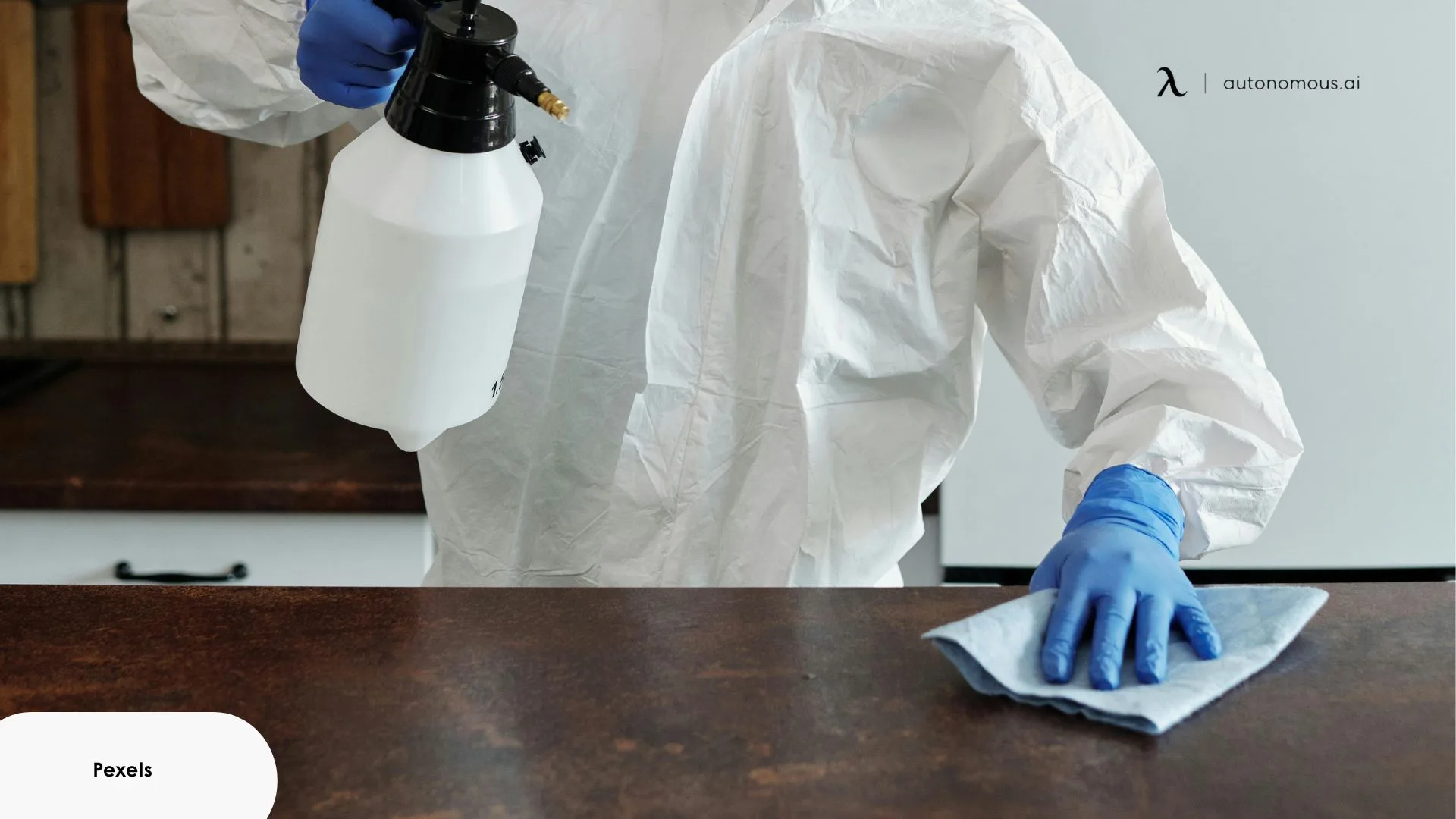
6. Use Mite-Specific Sprays Or Pesticides
If the infestation is widespread or persistent, it may be time to bring in stronger solutions.
- Choose a pesticide labeled for mites, not just general insects
- Apply in infested zones, cracks, and crawl spaces as directed
- Avoid overuse, especially indoors—use as a last resort after natural methods
For outdoor decks, make sure the pesticide is weather-safe and won’t damage treated wood.
7. Keep The Area Clear And Maintained
After treatment, maintenance is everything. Stay ahead of future wood mite issues with simple but consistent upkeep:
- Store firewood off the ground and away from walls
- Avoid stacking items directly on the floor in damp areas
- Keep wooden decks exposed to sunlight whenever possible
- Schedule routine inspections for signs of new infestations
Being proactive with your cleaning and storage habits can stop tiny bugs on wood from becoming a recurring problem.
If you're deciding between the two for future use, this breakdown of MDF wood vs solid wood can help you choose materials that are better suited to resisting mites and moisture over time.

FAQs
1. What do wood mites look like?
Wood mites are tiny, often less than 1mm in size. Depending on the species, they may appear white, red, brown, black, or gray. You might spot them as moving specks on wooden surfaces, especially in humid areas.
2. Why am I seeing tiny bugs on wood furniture and walls?
Tiny bugs on wood may be wood mites, especially if you're seeing them in humid areas or near old furniture. Check for clusters, webbing, or mold, which can all attract these pests.
3. Are wood mites harmful to humans?
No, wood mites do not bite or sting. They are harmless to humans and pets but can still be a nuisance if left unmanaged.
4. Are black wood mites harmful to wooden structures?
Black wood mites are often mistaken for other pests due to their dark color. While they don’t eat wood, their presence can signal mold or other underlying moisture issues that need attention.
5. What are the symptoms of wood mites?
The most common signs include small moving specks on wooden surfaces, fine webbing (especially with red wood mites), tiny holes in untreated wood, and a musty odor in damp areas.
In rare cases, people may notice increased allergy-like symptoms due to mold or dust mites coexisting with wood mites.
6. Can wood mites affect a house?
Yes, especially if your home has moisture problems, old wood, or untreated wood surfaces.
Wood mites themselves don't destroy the structural core like termites, but they can damage finishes, trigger mold issues, and make wooden areas less hygienic or visually appealing.
7. What’s the fastest way to get rid of wood mites?
The quickest method is to reduce moisture (use a dehumidifier), clean thoroughly, and apply diatomaceous earth or a mite-specific pesticide to infested areas.
Sealing cracks and improving airflow also stops new mites from entering.
8. What smell do wood mites hate?
Wood mites dislike strong, natural scents such as cedar, eucalyptus, clove, and tea tree oil. These can be used in sprays or sachets as a natural repellent in areas prone to infestation.
9. How do I get rid of wood mites on my deck?
Wood mites on a deck are usually attracted to moisture, potted plants, or nearby shaded areas. Cleaning the surface, improving airflow, and using natural deterrents like diatomaceous earth can help control their numbers.
10. What are red wood mites, and are they a threat to my home?
Red wood mites are a more visible type of mite often found outdoors on decks, patios, or siding. While they don’t bite or damage structures, they can be unsightly and often leave behind fine webs.
11. What’s the difference between wood mites vs termites?
Wood mites feed on mold and fungi, not the wood itself. Termites, however, consume the wood directly and cause serious structural damage. If the wood sounds hollow or crumbles easily, you may be dealing with termites, not mites.
12. Are gray wood mites different from other types of wood mites?
Gray wood mites blend easily with surfaces like untreated beams or outdoor furniture. While they don’t cause major damage, their presence often points to damp conditions that could attract worse pests over time.
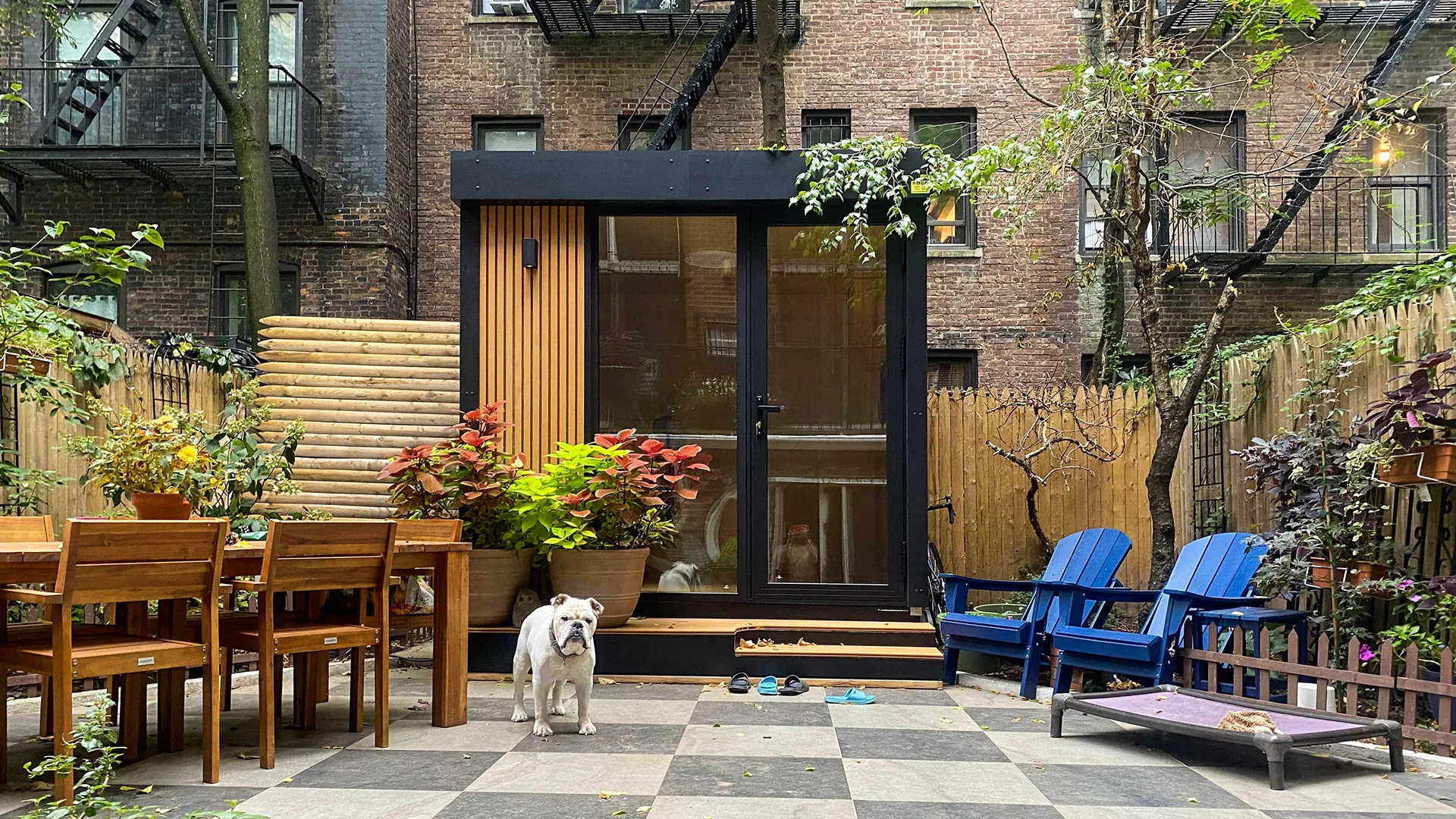
Conclusion
Getting rid of wood mites requires a combination of reducing moisture levels, thorough cleaning, sealing gaps and crevices, and eliminating the mites with insecticides or natural remedies.
In some cases, strong odors from treated wood, like formaldehyde, may also be present, making the space feel even less livable. If that’s the case, consider learning how to remove formaldehyde smell from wood furniture as part of your cleanup process.
By following the step-by-step guide outlined in the text, homeowners can effectively eliminate wood mites in their homes.
Sag es weiter

.svg)
